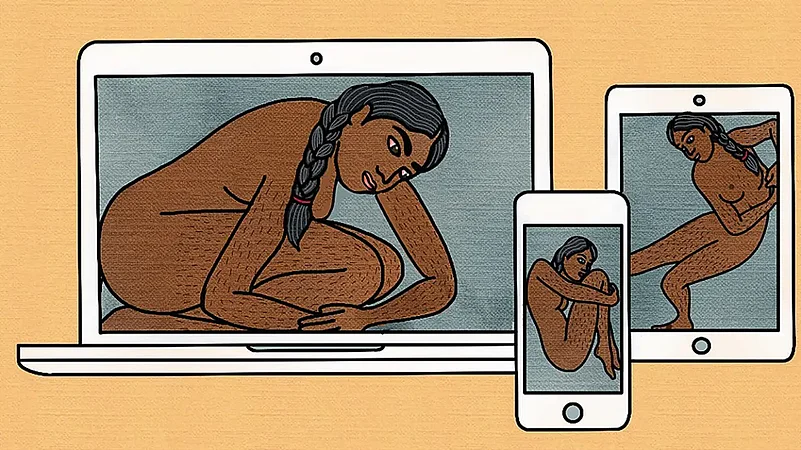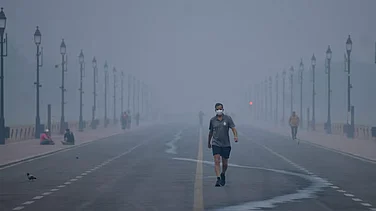Have you ever sent a photograph or selfie using a mobile phone or a computer? If not shared via webcams in a virtual chatroom, then perhaps to a loved one via a text message or an email attachment, or posted on “family-friendly” social networking and microblogging sites such as Facebook, Instagram or Twitter? Now imagine this image, even doctored or morphed onto other bodies, posted on pornography sites or used for “sextortion” (the malafide use of sexual images obtained either consensually—for instance during a relationship, or illegally without permission, or by hackers through spycams and malicious software. According to a recent media report, the FBI received 18,000 sextortion-related complaints in 2021. Yet, this is just the tip of the iceberg. Image-based abuse—including, but not limited to, sextortion and ‘revenge pornography’—where an ex-partner posts intimate pictures or videos online as a vicious form of retribution—is only one of the many ways in which digital technologies are being used to perpetrate sexual and gender-based harm.
Other forms include online rape threats and simulated rape, misogynistic hate-speech (e.g. directed at female politicians and journalists), cyber bullying, and as a tool to intimidate rape survivors and victims of sex trafficking. In researching rape victims’ suicides for my doctoral dissertation some years ago, I came across chilling instances, where rapists not only recorded their crimes but also circulated them via MMS clips, or threatened to upload the videos on YouTube as a shaming tactic to silence the victim. While many survivors probably did stay silent due to fear or social pressure—such that we may never hear their stories—some publicly fought for justice, taking on the system with or without family support. Some others took their own lives. I still remember the heartbreaking case of a young woman in India, gangraped and blackmailed by her boyfriend and his friends, who died after leaving a suicide note: “Punish him, God, because I loved him.”
Countless other injuries are inflicted through apps, online dating platforms and cloud-based services every day. Thus, despite the many positive opportunities for connection made possible through digital technologies in our work and our worlds, they can unfortunately also exacerbate existing inequities and enable the targeting of vulnerable people, e.g. minority women considered less deserving of respect. Earlier this year, for instance, a male graduate in computer applications was arrested by Delhi Police for “auctioning” Muslim women through his online app ‘Sulli Deals,’ hosted on Github using photographs sourced without permission.
This is not just an Indian or a South Asian problem—it is global. The 2012 case in Steubenville, Ohio, for instance, where a teenage rape victim was photographed not only by one of the perpetrators on his iPhone, but also by several witnesses of the assault—all of whom shared her naked, still-unconscious images via phone, email and Twitter with hashtags. Images were also circulated in numerous other high-profile cases in the US, such as the Stanford rape case (The People of the State of California v. Brock Allen Turner, 2015). In Australia, the rape of a teenage girl was filmed and sold as a DVD in Melbourne schools and on the internet in 2006. In New Zealand, a group of men gang-raped minor girls and shared these images on a Facebook page for two years. From around the world, this list of documented cases goes on and on; and when we account for unreported crimes, presumably a higher number owing to the social stigma associated with sexual violence, official statistics are only a fraction of the actual numbers.
In fact, technology-facilitated sexual violence has become so ubiquitous in the present day that it calls for an overhauling of earlier theoretical frameworks. One example is British scholar Liz Kelly’s 1988 work, arguing that while rape and incest were criminalised by law, other forms of sexual harassment, such as street-flashing and cat-calling, were often normalised, even though these were all a part of a continuum, shaped by similar socio-cultural ideas about gender. While this model has not lost its relevance even 30 years down the line, many earlier forms of sexual abuse have now been altered by technology e.g. cyber-flashing is fast replacing street-flashing, with unsolicited images of genitalia now sent on smartphones via bluetooth. There are so many instances in contemporary culture that it led to my revising the syllabus of a university course I teach on global dimensions of sexual violence, to add new material on tech-facilitated sexual violence.
But updating a course syllabus is easier than updating legal systems worldwide. While sexual violence is a criminal offence in most countries, cyber-criminology is a relatively new field, and its gendered aspects, newer still. Hence, legislative gaps remain when it comes to the contemporary use of communication technologies to inflict sexual harms, such as the non-consensual creation or distribution of intimate images. In these cases, existing criminal and civil laws on sexual harassment, extortion, identity theft and fraud are used for purposes of prosecution. Only a few jurisdictions have specific laws to address technology-facilitated sexual violence.
In 2015, the Criminal Code of Canada recognised as a crime the non-consensual use of sexualised images. In the same year, New Zealand made online acts causing serious emotional distress a criminal offence. Other countries like Australia, Japan, UK, etc., have also introduced new legislation, with more jurisdictions following suit. Yet, challenges remain everywhere. Under the federal system of the United States, many states have passed new laws and more Senate bills have been under consideration. But the US law does grant a degree of legal immunity to online platforms hosting harmful content, and victims often run up against additional legal obstacles such as the specific language around intent, proving the extent to which our privacy has been invaded (in the few states where image-based abuse is recognised as a privacy violation or civil infraction), and the seriousness of emotional distress and harm it causes.
Solutions, then, are not simple. Instead, they call for individual and community-based measures, legislative amendments, partnerships between various stakeholders within local jurisdictions, as well as global cooperation. On an individual level, it cannot hurt to be mindful that those we encounter online (like those we encounter in person) may have a range of motivations while enjoying the additional protection of distance, if not anonymity. Individual bystander intervention on social media also remains important, wherever possible. So does the need for gender-sensitive policies on digital platforms, and working with experts in preparedness for yet newer technologies. Systemic changes such as education and public sensitisation, and mental health resources for those affected, can play a big role. To live in our brave new world of digital technologies, its many possibilities and multiple challenges, we need a brave new vision.
(This appeared in the print edition as "The World of Bobs and Vagenes")
(Views expressed are personal)
Debotri Dhar is faculty affiliate for Women and Gender Studies at Center on Finance, Law and Policy, University of Michigan, Ann Arbor

























